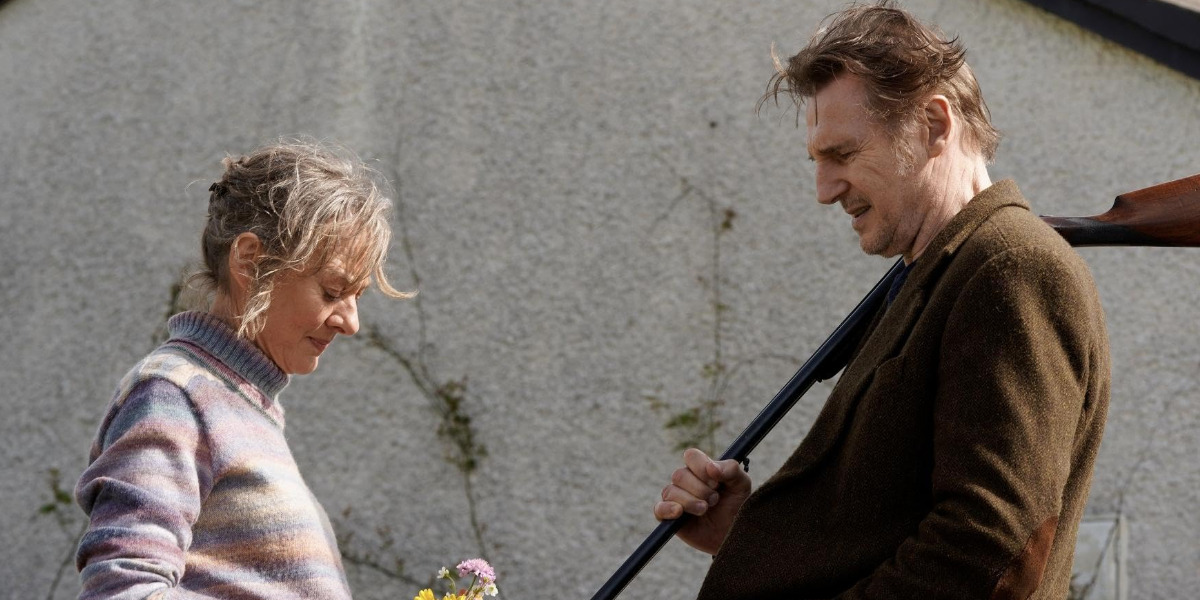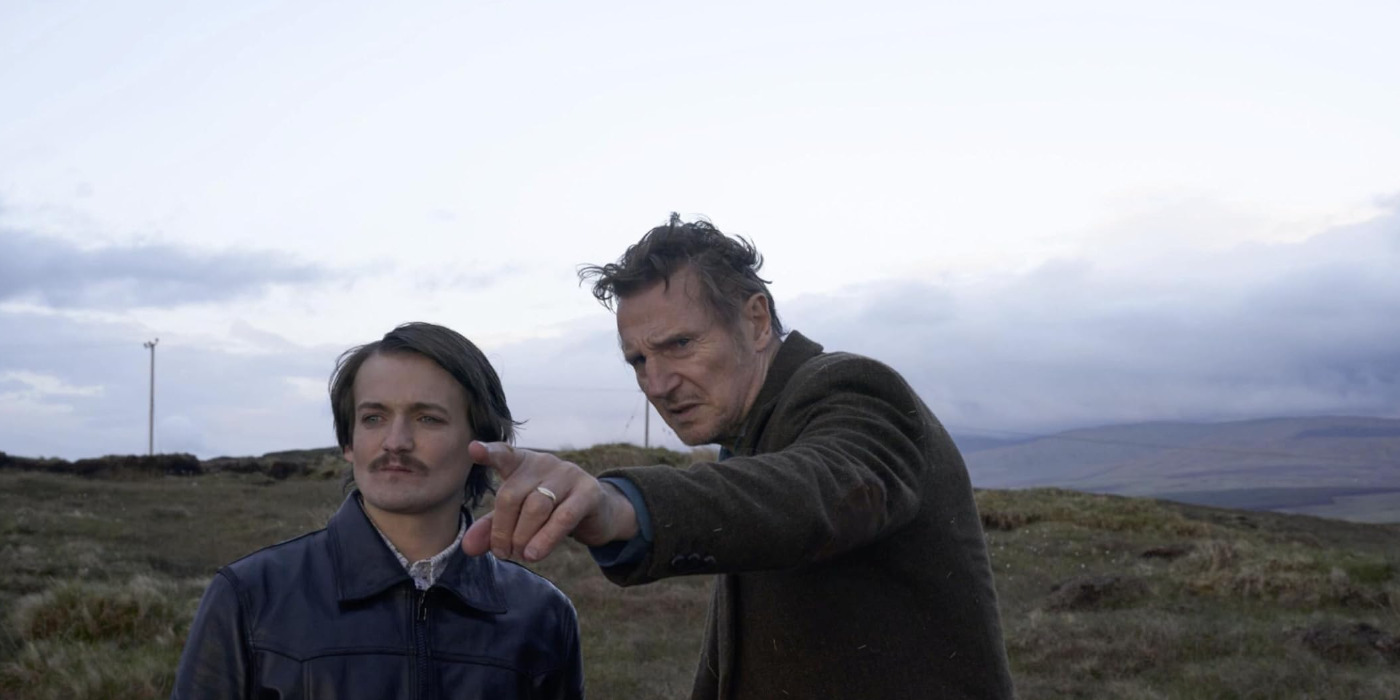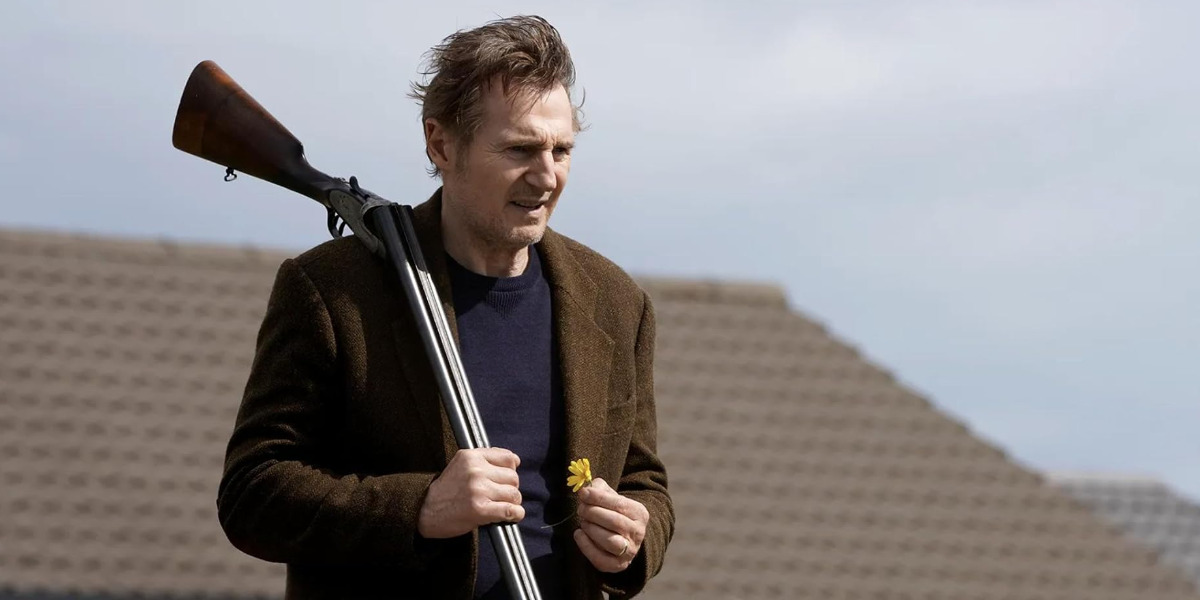The Robert Lorenz film, ‘In the Land of Saints and Sinners,’ is an unconventional Western that features no cowboys and sheriffs yet possesses all the narrative and thematic beats of the genre. The story takes place in a small town where a WWII veteran, Finbar Murphy, resides. Leading the life of a covert hitman, Finbar yearns for a more peaceful existence and tries to hang up his rifle. However, at the same time, trouble arrives in his town in the form of runaway IRA members looking for a place to lay low in the wake of their recent bombing.
Consequently, circumstances lead to a battle between Finbar and the fierce Doireann McCann, unraveling the morally nuanced cycle of payback. The film’s scenic background, with hulking hills and illustrious cliffs, remains as much of a participant in the tale’s progression as any plot point regarding the IRA or world-weary veterans. For the same reason, fans must be compelled to wonder about the period and geographic setting of the movie.
In the Land of Saints and Sinners: Set in Ireland’s Donegal
The film’s setting in Ireland remains evident within every crevice of the tale, populated with central characters that all sport the natural Irish accents of the actors behind them. Furthermore, the overarching yet understated presence of the IRA (Irish Republican Army) adds socio-political tension that is unique to the country’s history. Even so, the most prominent geographical and social element of the story emerges from its specific setting within the Irish small town of County Donegal.

In fact, the tale’s setting is so intrinsic to its narrative that the town retained a mention in Terry Loane and Mark Michael McNally’s original script, inspired by a visit to the county. For the same reason, after the project underwent development under Lorenz’s direction, the filmmaker decided to check out Donegal County during the initial location scouting. While discussing the same in a conversation with Sarah’s Backstage Pass, Lorenz asserted his curiosity to learn the exact reason why the county stirred inspiration during the scriptwriting process.
“It’s [County Donegal] a three-and-a-half-hour drive from everything,” shared Lorenz. “But when I got there, it was just stunning. It is beautiful. It’s where the North Atlantic just slams Ireland, and so it creates these beautiful epic cliffs. And I said, oh, now I get it, and we have to shoot it [the film] here.” Moreover, in his research, the filmmaker learned that small communities such as the one in Donegal were frequent spots among people looking for an escape or a hideout.
The same harmonized seamlessly with an inherent aspect of the film, strengthening Lorenz’s resolve to reflect the locality’s authenticity in the project. “They’re in this small, little town, and you could believe that these people could hide here because there’s so much open space and so much anonymity there,” the director told The Action Elite. “So, it all made sense to me.” As a result, the coastal area became the perfect backdrop for this distinctly Irish tale, instilling a sense of natural beauty in a tale saddled with complex morality.
A Story That Unfolds in 1974
Alongside the Ireland-centric setting of ‘In the Land of Saints and Sinners,’ the film’s occupation of 1974 also informs the narrative in significant ways. As the film opens with an IRA bombing attack outside of a bar that takes innocent lives as collateral damage, Ireland’s history becomes an intrinsic part of the storyline. In real life, the 1970s saw the emergence of the Provisional Irish Republican Army, which began an aggressive campaign that included bombing missions. Consequently, since many of the central characters, especially Doireann, rely upon era-appropriate socio-politics to explain their moral disposition, the film’s 70s setting remains highlighted.

Furthermore, Lorenz’s decision to film in County Donegal infused the film with the visual aid it needed to dispel a retro feel since the locality sports a stark lack of modern architecture, rendering itself almost visually frozen in time. Another one of the notable aspects in which the time period jumps out is the film’s music composition, which reflects the tale’s periodic genre in an exciting and authentic fashion. Siblings Diego, Lionel, and Nora Baldenweg helmed the film’s music production, consulting with Lorenz to craft the ideal thematic resonance for the story. “They said about composing a bunch of music; I just gave him the instruction that, look, I’m making a 70s thriller, and I want the music to help enhance that,” said the filmmaker. “Then I also want to contrast it with sort of the beauty of Ireland and kind of open it up a little bit as well. So, they delivered.”
Read More: Best Crime Movies on HBO Max


You must be logged in to post a comment.